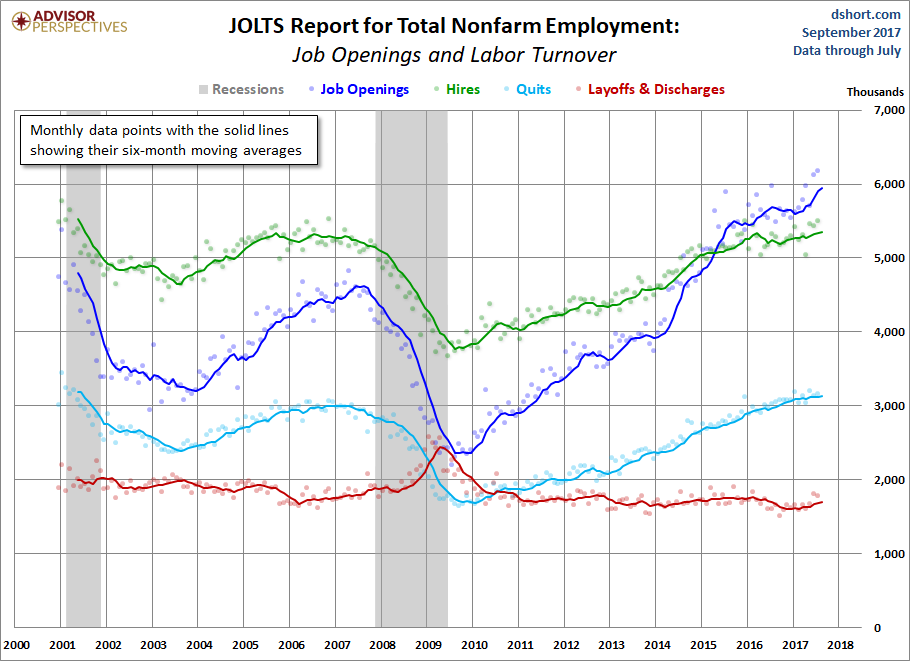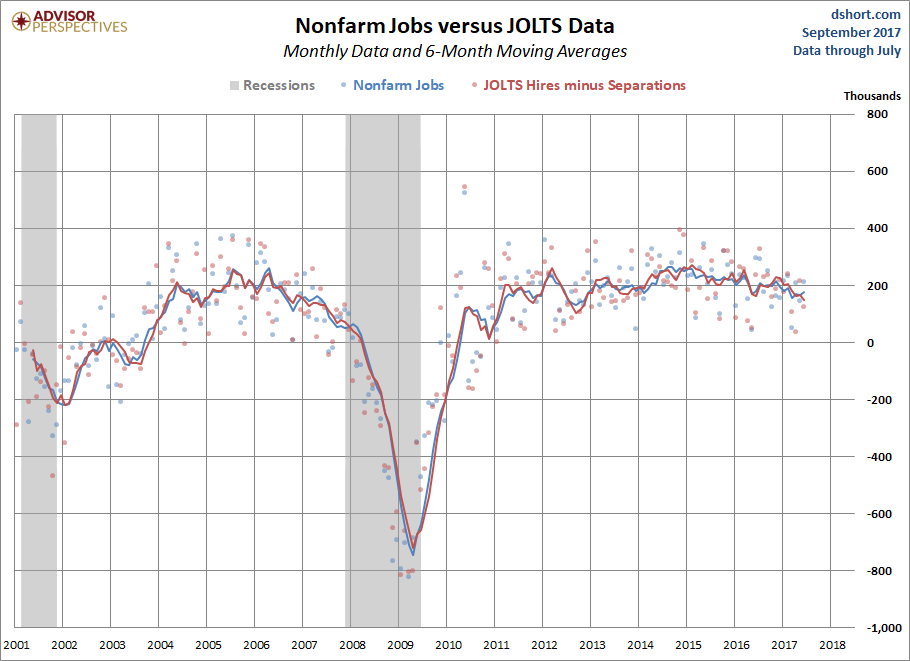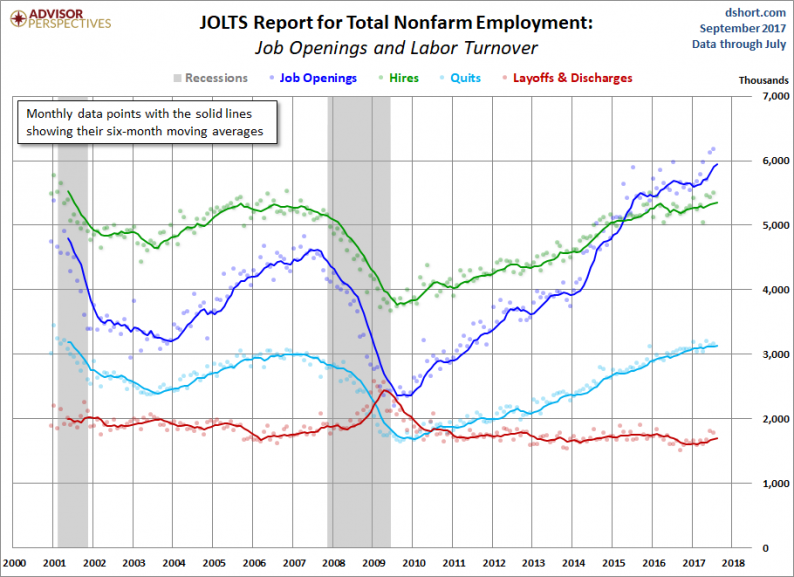The latest JOLTS report (Job Openings and Labor Turnover Summary), with data through July, is now available. The first chart below shows four of the headline components of the overall series, which the BLS began tracking in December 2000. The time frame is quite limited compared to the main BLS data series in the monthly employment report, many of which go back to 1948, and the enormously popular Nonfarm Employment (PAYEMS) series goes back to 1939. Nevertheless, there are some clear JOLTS correlations with the most recent business cycle trends.
The chart below shows the monthly data points four of the JOLTS series. They are quite volatile, hence the inclusion of six-month moving averages to help identify the trends. For the last twenty-seven months, the moving average for openings has been above the hires levels as seen in the chart below.

The most closely watched series is the one for Total Nonfarm Job Openings, the blue line in the chart above. The moving average peaked in mid-2007 and began rolling over to its through a few months after Great Recession ended and is currently at an all-time high. The Openings moving average then trended upward, surpassing its mid-2007 peak in the late summer of 2014. The Hires series has risen at a slower pace. Its moving average had nearly reached its pre-recession peak earlier this year but is now off its post-recession high. Quits have been steadily trending upward and is now above its pre-recession high; they are generally thought to show an economy that supports the flexibility to leave or change jobs. The Layoffs and Discharges series, the red line, has been essentially flat since early 2013, but in September hit an all-time low.
For comparison, here is the monthly BLS Employment Situation Summary charted with JOLTS data:

A Population-Adjusted Perspective on JOLTS
The chart above is based on the actual numbers in the JOLTS report. A better way to view the numbers is as a percent of Nonfarm Employment, which essentially gives us a population-adjusted version of the data. Here is that adjustment for four of the JOLTS series. Note that the vertical axis for each is optimized for the high-low range to facilitate an understanding of the individual trends.













Leave A Comment